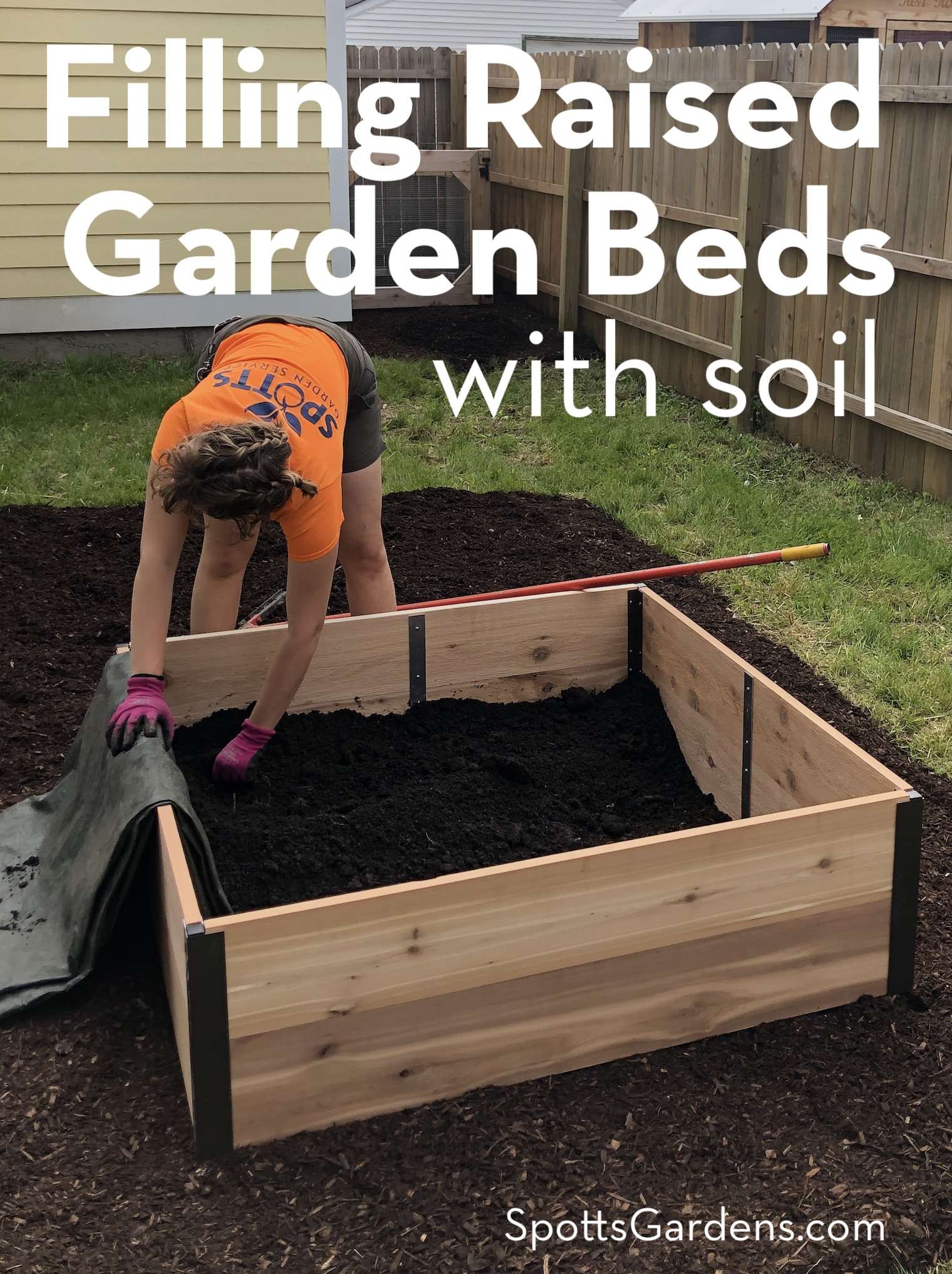In this article, we will explore the topic of choosing the ideal top layer for a raised garden bed. Whether you’re interested in off-grid living or simply enjoy gardening, this information will be helpful to you. We will discuss the options and considerations when it comes to selecting the best top layer for your raised garden bed. By the end of this article, you will have a clear understanding of what the ideal top layer should be for your gardening needs.
Choosing the Ideal Top Layer for a Raised Garden Bed
Gardening is a great way to connect with nature and grow your own fresh produce. Whether you are a seasoned gardener or just starting out, raised garden beds offer numerous advantages. They provide improved drainage, better soil quality, and easier pest control. However, one important aspect of raised garden beds that often gets overlooked is the choice of the top layer. In this article, we will explore the different options for top layers and help you understand how to choose the ideal one for your raised garden bed.

Improved Drainage, Better Soil Quality, and Pest Control
Before diving into the details of top layers, let’s briefly discuss the benefits of raised garden beds. The first advantage is improved drainage. Raised garden beds are elevated above the ground, which helps excess water to drain away more efficiently. This prevents waterlogging and ensures that your plants’ roots stay healthy.
Another benefit is better soil quality. By using a raised garden bed, you have control over the soil composition. This allows you to create the perfect environment for your plants, with proper nutrition and good structure. Additionally, you can choose to add organic matter, such as compost, to further enrich the soil.
Lastly, raised garden beds offer easier pest control. The elevated nature of the beds makes it more difficult for pests like slugs and snails to reach your plants. Furthermore, you can implement physical barriers, such as netting, to keep larger pests away.
Now, let’s delve into the importance of the top layer in a raised garden bed.
Understanding the Importance of the Top Layer
The top layer of a raised garden bed serves multiple functions. Its primary role is to protect the underlying soil and plants from the elements. The top layer acts as a barrier, preventing excessive moisture loss due to evaporation and reducing weed growth.
When choosing the ideal top layer for your raised garden bed, there are several factors to consider, including its ability to retain moisture, its effectiveness at preventing weed growth, and its compatibility with your specific plant preferences.
Types of Top Layers for Raised Garden Beds
There are several options for top layers in a raised garden bed. Each option has its own advantages and considerations. Let’s take a closer look at some of the most common choices:
Organic Mulch
Organic mulch, such as shredded leaves or wood chips, is an excellent top layer choice for a raised garden bed. It helps to retain moisture in the soil, provides insulation against extreme temperatures, and gradually breaks down, adding organic matter to the soil.
Compost
Compost is another popular top layer option. It is rich in nutrients and improves soil structure. By adding compost as a top layer, you can gradually enrich the underlying soil and promote healthy plant growth.
Garden Soil
Using your existing garden soil as a top layer can be a convenient option. However, it is important to ensure that the soil is of good quality and free from contaminants. Additionally, it may be necessary to add organic matter to ensure optimal soil fertility.
Straw or Hay
Straw or hay can also be used as a top layer in a raised garden bed. They help to retain moisture, suppress weed growth, and act as an insulating layer. Straw and hay are especially beneficial for vegetable gardens.
Wood Chips
Wood chips provide excellent moisture retention and help to regulate soil temperature. They also break down slowly, releasing nutrients over time. However, it is important to choose untreated wood chips to avoid potential chemical contamination.
Gravel or Rocks
Gravel or rocks can be used as a top layer for decorative purposes or in areas where water drainage is a concern. They provide excellent drainage and prevent soil erosion. However, it’s important to note that gravel or rocks can heat up quickly in hot climates, potentially damaging the roots of sensitive plants.
Now that we’ve explored the different types of top layers, let’s dive into each option in more detail.
Organic Mulch as a Top Layer
Organic mulch offers numerous benefits and is a popular choice for raised garden beds. It helps to conserve soil moisture by reducing evaporation and regulating soil temperature. Organic mulch also suppresses weed growth, preventing competition for resources. As the mulch breaks down, it adds valuable organic matter to the soil, improving its fertility and structure.
There are several types of organic mulch that you can choose from, including shredded leaves, wood chips, straw, and grass clippings. Each type has its own unique characteristics and considerations. When applying organic mulch as a top layer, it is important to spread it evenly and maintain a thickness of around 2-4 inches.
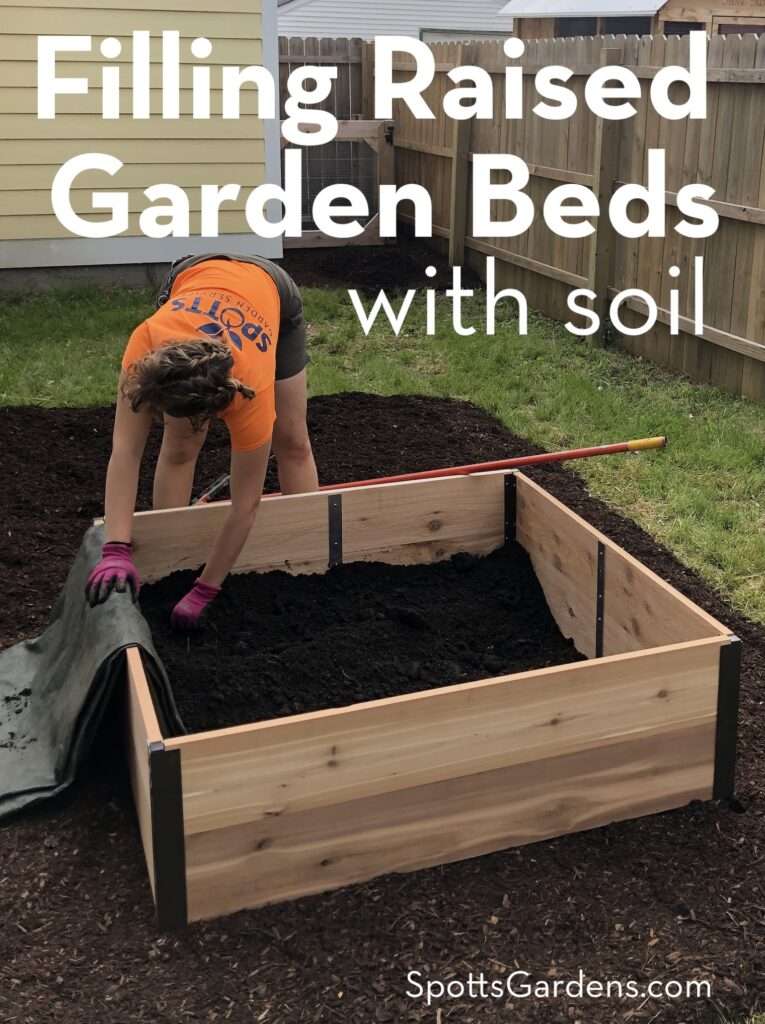
Compost as a Top Layer
Compost is often referred to as “black gold” in the gardening world due to its incredible benefits. Using compost as a top layer in a raised garden bed provides a steady release of nutrients, improves soil structure, and promotes beneficial microbial activity. Compost also helps to reduce soil erosion and increases water retention capacity.
When it comes to compost, there are different types available, such as homemade compost, worm castings, and commercially produced compost. It is important to choose a compost that is well-aged and free from chemical additives. To apply compost as a top layer, spread it evenly over the soil surface and gently work it into the top few inches of soil.
Garden Soil as a Top Layer
Using garden soil as a top layer in a raised garden bed can be a convenient option, especially if you have access to high-quality soil. Garden soil contains essential nutrients and beneficial microorganisms, providing a conducive environment for plant growth. However, it is crucial to ensure that the garden soil is free from contaminants and properly prepared before use.
Before applying garden soil as a top layer, remove any weeds or debris and loosen the existing soil. You can then spread the garden soil evenly, ensuring a thickness of at least 4-6 inches. It is also beneficial to mix the garden soil with organic matter, such as compost, to further enhance its fertility.
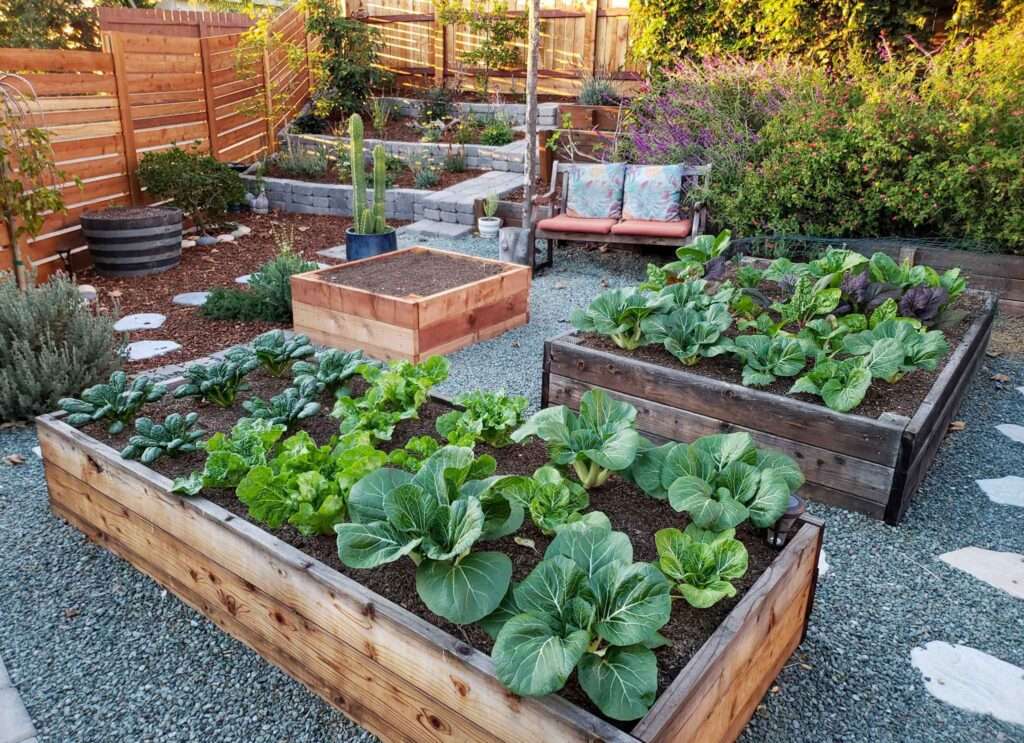
Straw or Hay as a Top Layer
Straw or hay is an excellent option for the top layer in a raised garden bed, particularly for vegetable gardens. It helps to retain moisture, suppress weed growth, and acts as an insulating layer, protecting the plants from extreme temperatures. Straw or hay also breaks down gradually, adding organic matter to the soil and improving its structure.
To apply straw or hay as a top layer, spread it evenly over the soil surface, ensuring a thickness of around 3-4 inches. Be careful to avoid using hay containing seeds to prevent weed growth in your garden bed.
Wood Chips as a Top Layer
Wood chips offer several advantages when used as a top layer in a raised garden bed. They help to conserve soil moisture, regulate soil temperature, and suppress weed growth. Wood chips also break down slowly, providing a gradual release of nutrients to the soil.
To apply wood chips as a top layer, spread them evenly over the soil surface, maintaining a thickness of around 2-4 inches. It is important to choose untreated wood chips to avoid any potential chemical contamination.
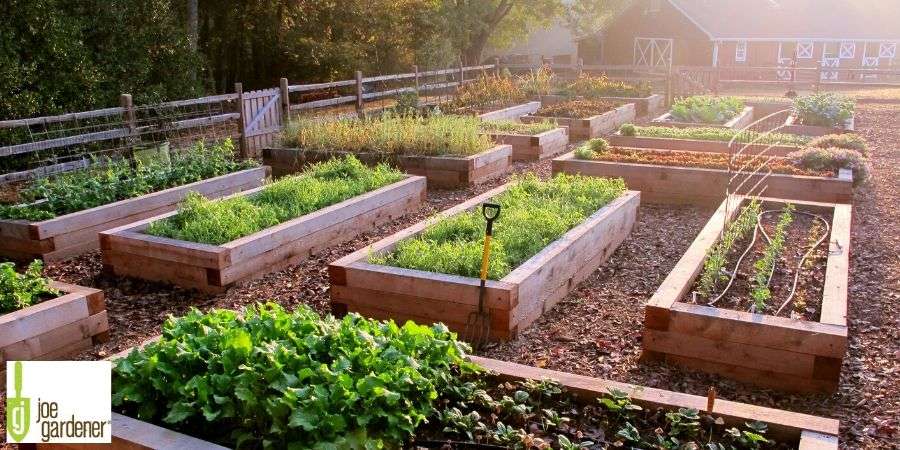
Gravel or Rocks as a Top Layer
Gravel or rocks can be a viable top layer option, especially in areas with poor water drainage. They provide excellent drainage properties and prevent soil erosion. Gravel or rocks also add a decorative touch to your raised garden bed. However, it is important to note that in hot climates, they can absorb and radiate heat, potentially damaging the roots of sensitive plants.
To install gravel or rocks as a top layer, prepare the soil by removing weeds and debris. Spread a layer of landscape fabric before placing the rocks or gravel on top. Ensure that the layer is even, with a thickness of around 2-4 inches.
Factors to Consider When Choosing the Ideal Top Layer
When choosing the ideal top layer for your raised garden bed, it is important to consider several factors:
Climate and Weather Conditions
Different top layers have varying abilities to retain moisture and regulate soil temperature. Consider the climate and weather conditions in your region to choose a top layer that suits your specific needs.
Plant Preferences
Different plants have different requirements when it comes to soil moisture, nutrient levels, and root aeration. Consider the specific preferences of your plants to select a top layer that will provide optimal conditions for their growth.
Watering and Irrigation Needs
Certain top layers, such as organic mulch and straw, can help retain moisture in the soil for longer periods. This can reduce the frequency of watering and irrigation requirements. Consider your watering and irrigation needs when choosing the ideal top layer.
Maintenance Requirements
Different top layers have varying maintenance needs, such as the need for replenishment or replacement over time. Consider the level of maintenance you are willing to commit to maintain the health and productivity of your garden.
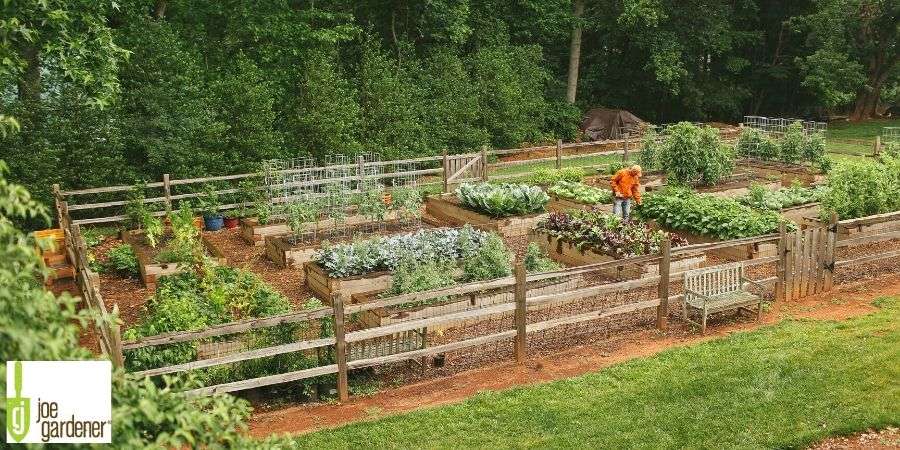
Tips for Properly Applying the Top Layer
To ensure the successful application of the top layer in your raised garden bed, consider the following tips:
Layer Thickness and Coverage
When applying the top layer, maintain a thickness that is suitable for the specific type of layer. Different layers may require varying thicknesses to provide optimal benefits. Ensure that the top layer covers the entire surface of the soil evenly.
Preventing Weed Growth
To minimize weed growth, it is important to prepare the soil properly before applying the top layer. Remove any existing weeds or debris and consider adding a layer of landscape fabric or cardboard as a weed barrier.
Proper Watering Techniques
The top layer can affect the water retention capacity of the soil. Adjust your watering techniques accordingly to ensure that the moisture penetrates through the top layer and reaches the plant roots. Consider using drip irrigation or soaker hoses for efficient watering.
Conclusion
Choosing the ideal top layer for your raised garden bed is crucial for its overall success and productivity. Consider your specific needs and preferences, as well as the requirements of your plants, climate, and maintenance capabilities. Whether you opt for organic mulch, compost, garden soil, straw, wood chips, or gravel, each top layer offers unique benefits that can enhance the health and vitality of your garden. With proper application and care, your raised garden bed will flourish and provide you with bountiful harvests for years to come. Happy gardening!

